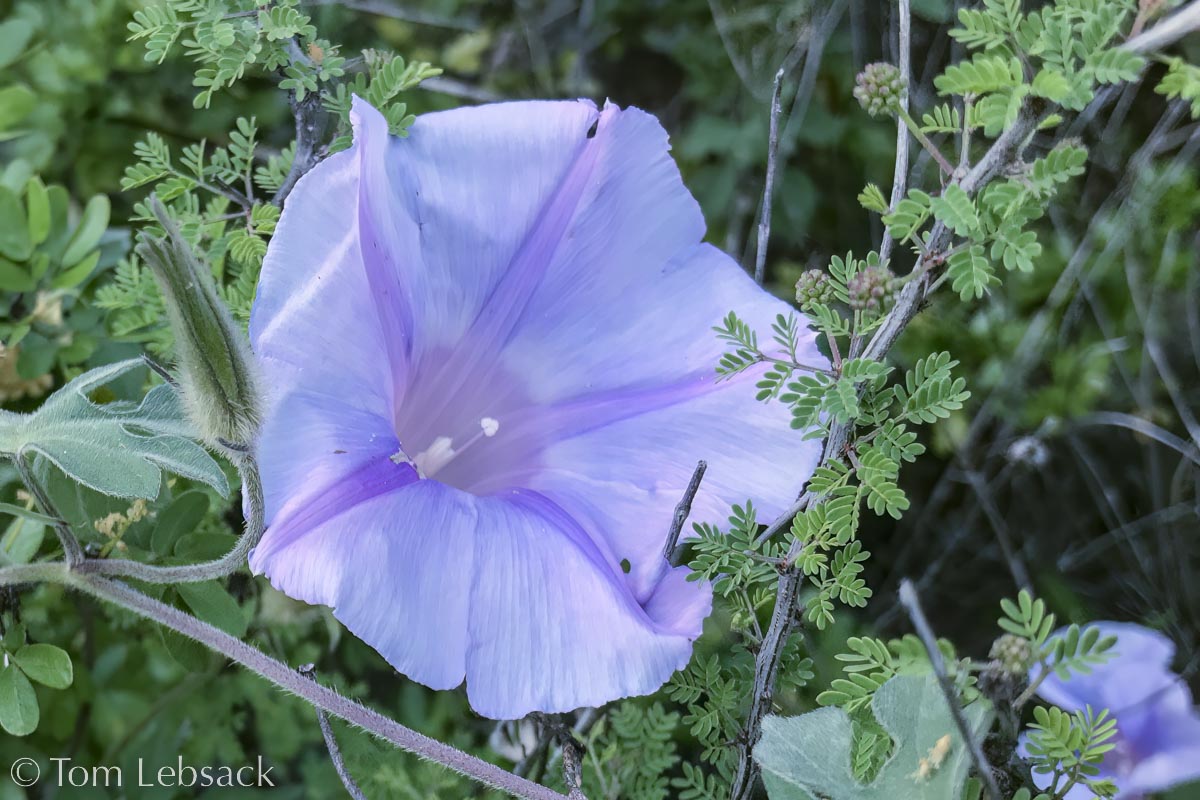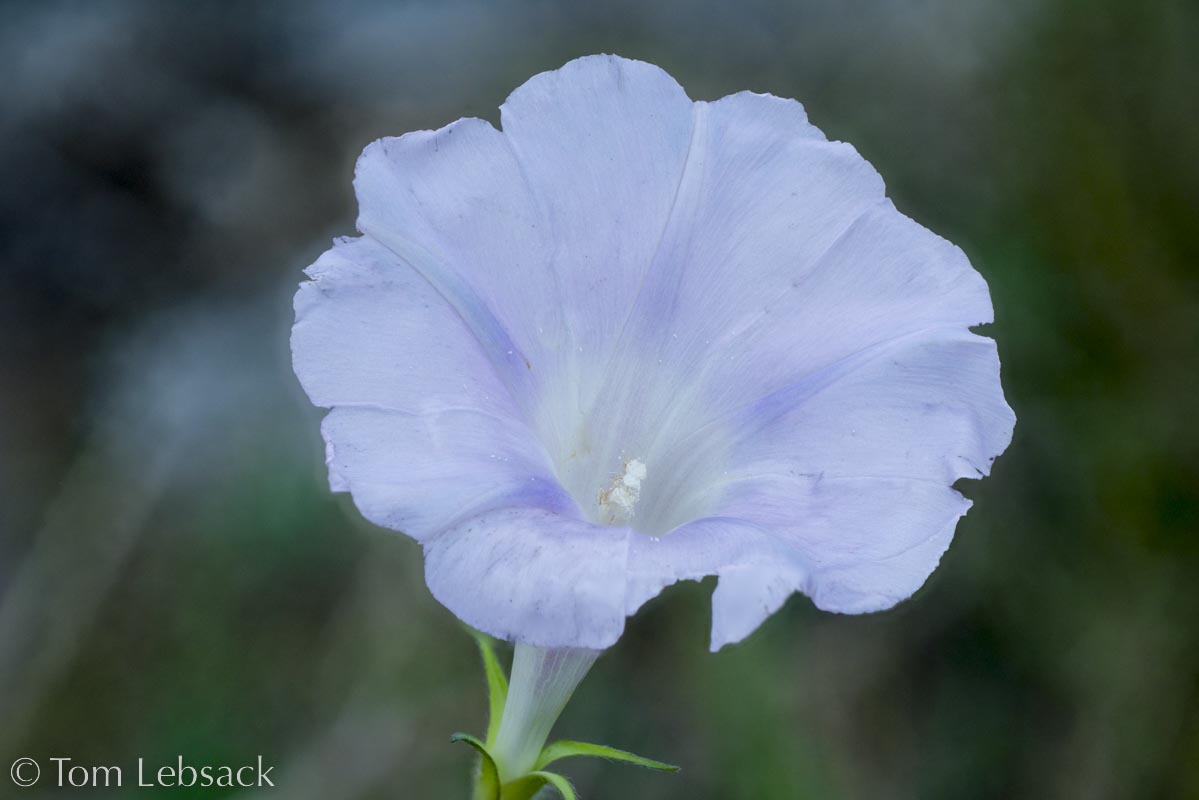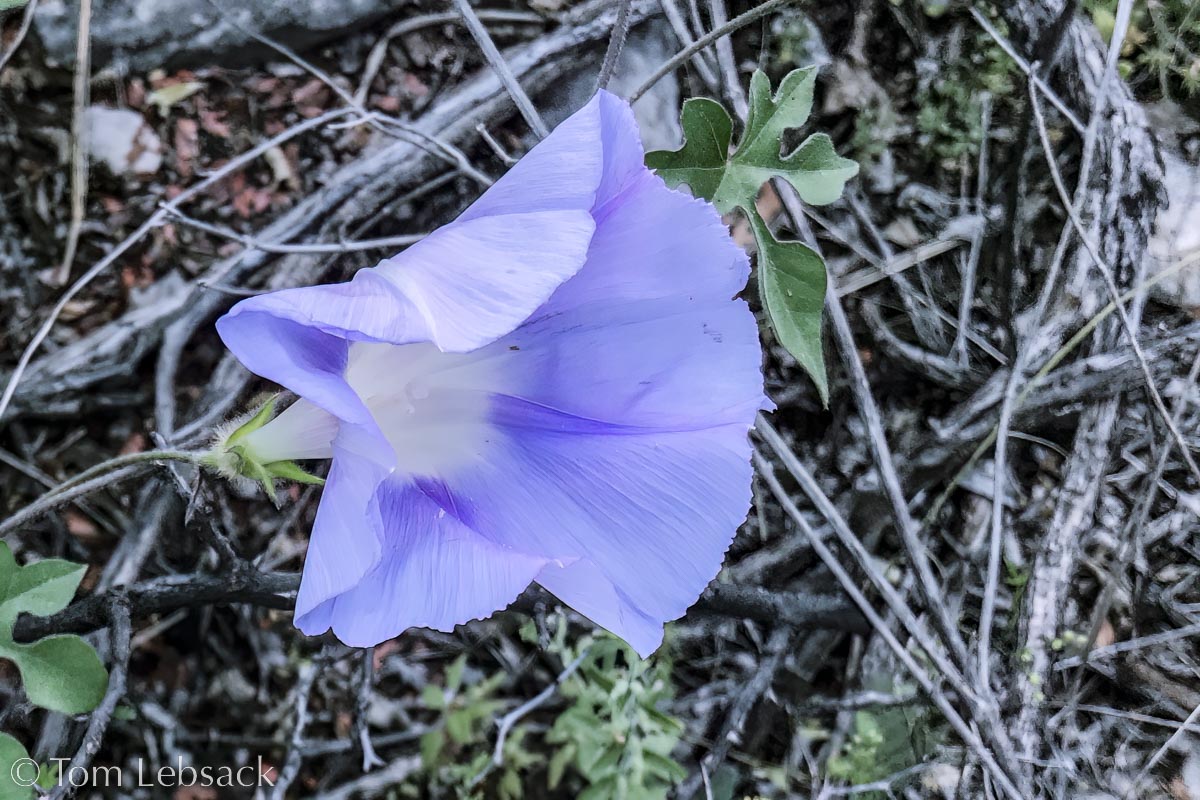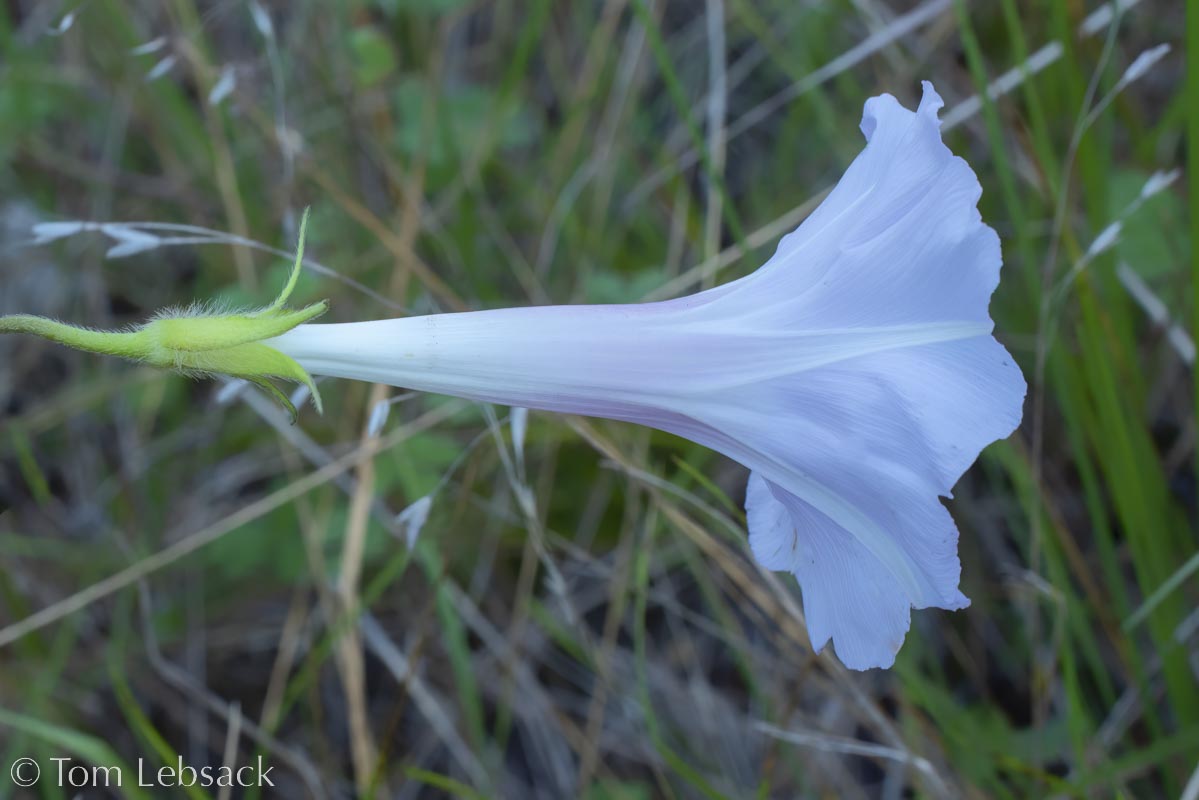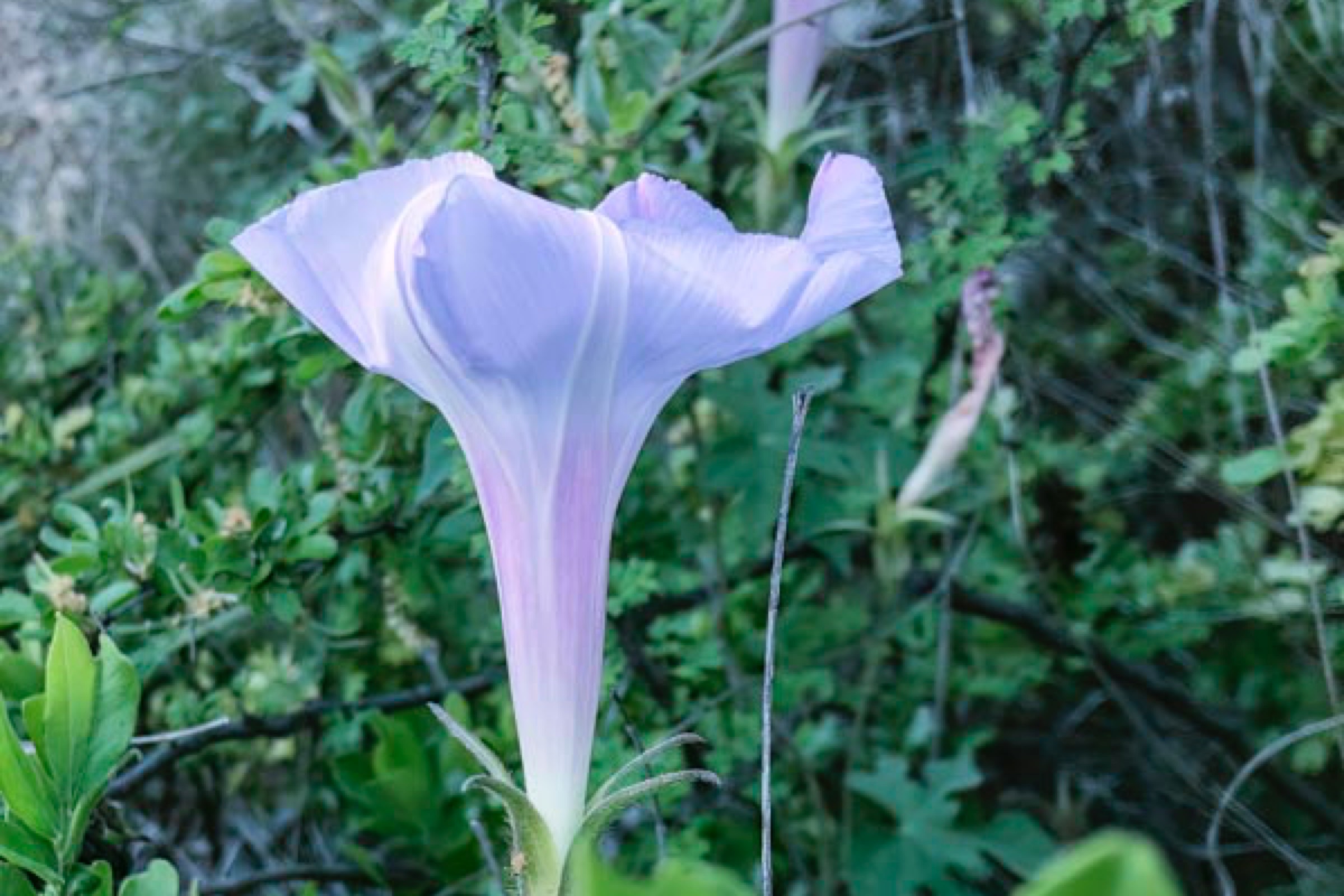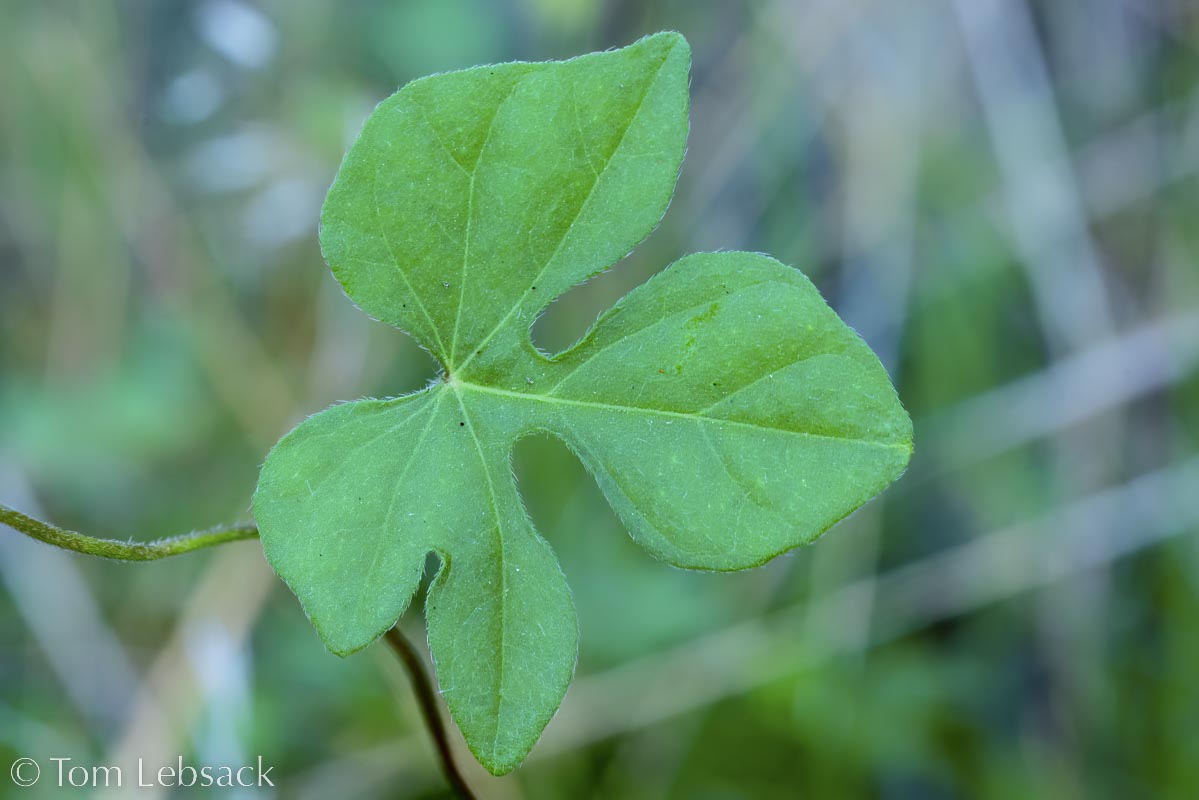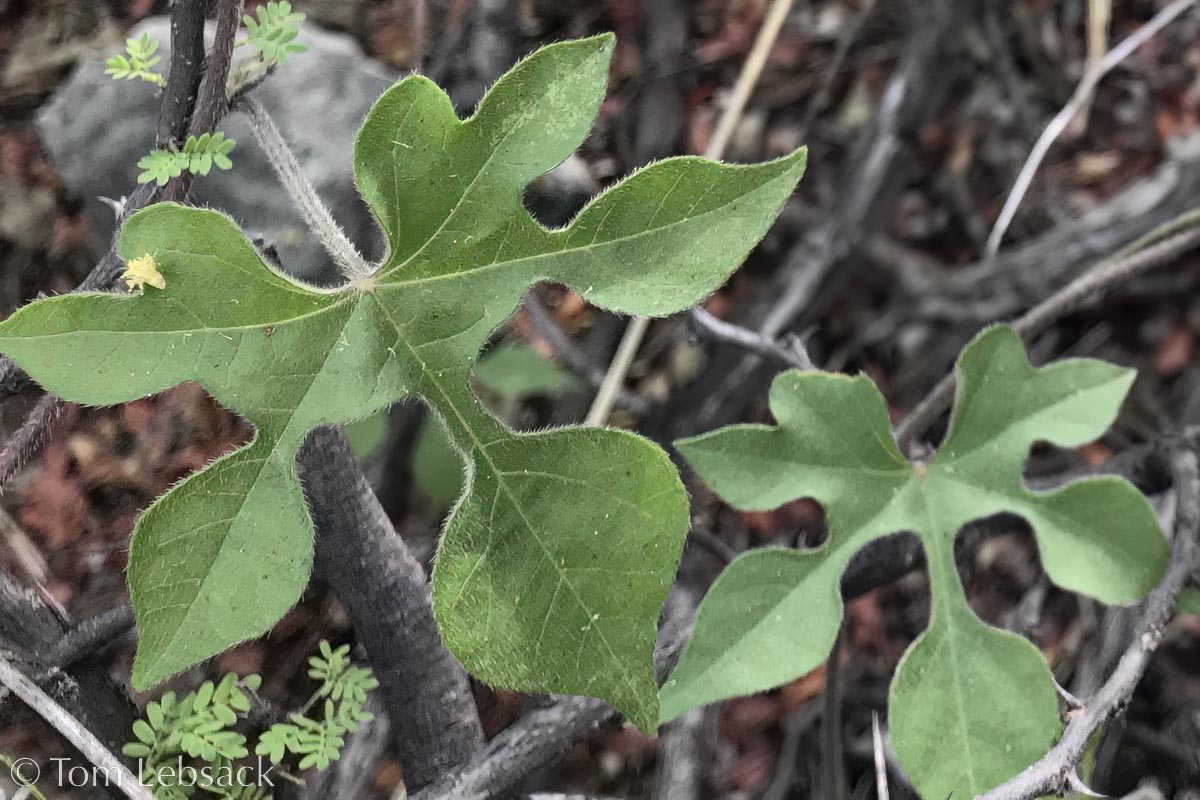Texas Wildbuds
Ipomoea lindheimeri
(Lindheimer’s Morning-glory)
| Scientific Name | Ipomoea lindheimeri | USDA PLANTS Symbol | IPLI |
| Common Name | Lindheimer's Morning-glory | ITIS Taxonomic Serial No. | 30780 |
| Family | Convolvulaceae (Morning Glory) | SEINet Reference |
Click Here |
| Description | Habitat: Rocky ground and outcrops, draws and ravines; endemic to Texas. Plant: Twining perennial vine, stems with pubescent hairs 8 or more feet long. Leaves: Blades cordate-ovate to suborbicular in outline 1-1/4 to 2-3/4 inches long and wide with 3 to 7 deep, ovate-lanceolate to narrowly lanceolate lobes. Inflorescence: Large 5-lobed, funnel-shaped blossoms 2-1/2 to 4 inches long arising from leaf axils; corolla blue to purple with pale or white center. Bloom Period: April to October. References: "Wildflowers of Texas" by Michael Eason and "Manual of the Vascular Plants of Texas" by Correll and Johnston. Note: The Biota of North America map (right) appears to be in error regarding the legal status of I. lindheimeri. The plant is considered a native species, non-invasive, in Texas and New Mexico, by USDA Plants and is not listed by Texas Invasives. |
BONAP Distribution Map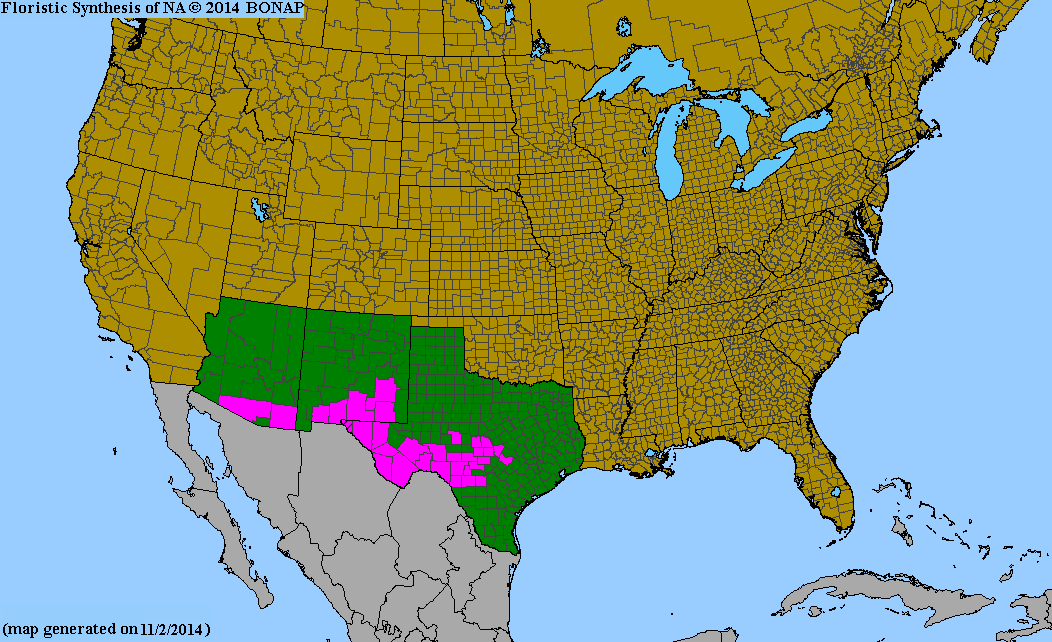 Map Color Key Map Color Key |
Texas Status: Native |
Banner photo of Castilleja indivisa and Lupinus ssp. taken along FM 1323 north of Johnson City, Blanco County
© Tom Lebsack 2025
Every attempt is made to provide accurate, up-to-date, and relevant information, but the completeness or accuracy of any information presented on this website cannot be guaranteed. I use authoritative references to insure high standards of accuracy and review and update the information frequently.
